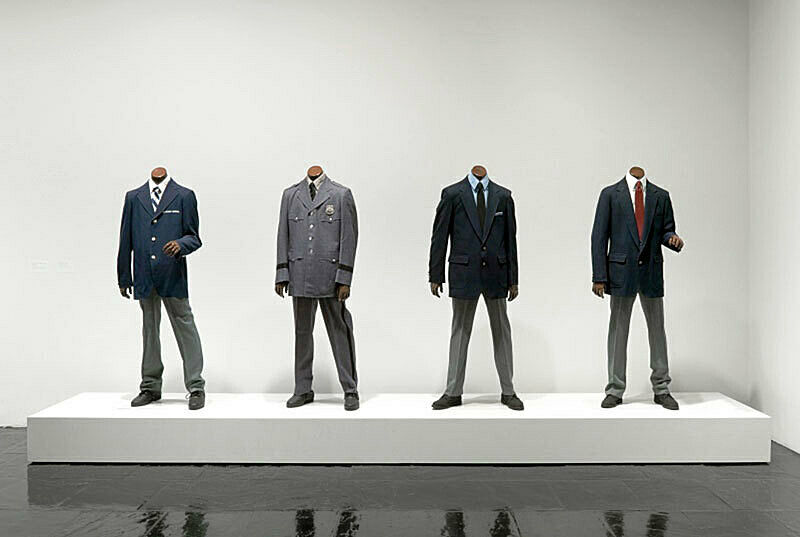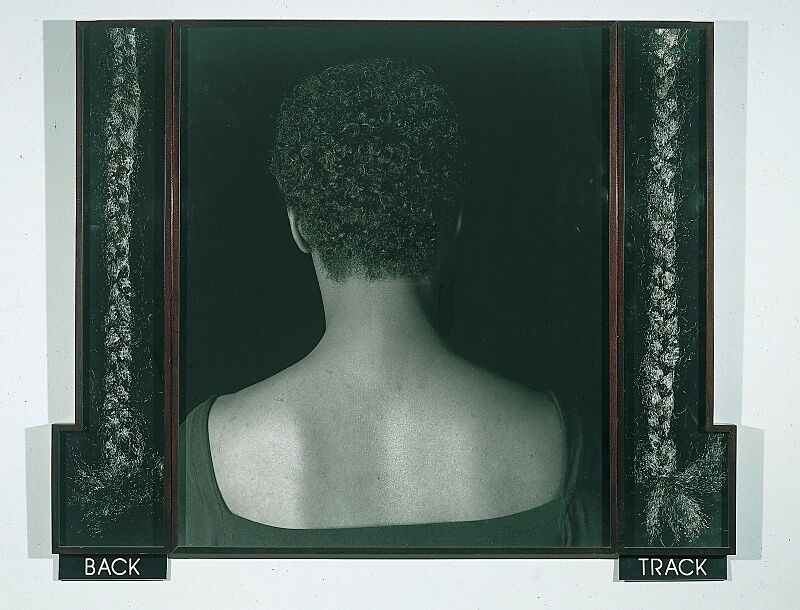Identity Politics
Explore identity politics through creative writing
Works in the Guarded View chapter of the exhibition explore how our identities are shaped by culture as much as by birth, and how categories like race and gender depend on the complicated interaction between how we see and present ourselves and how others see us.
In Lorna Simpson’s 2 Tracks (1990), a woman turns her back to the camera, challenging our gaze and our ability to classify her as either an individual or a type, while the faceless mannequins in Fred Wilson’s Guarded View confront us with black figures that serve institutional power but are usually meant to go unseen. With your students, explore how these artists have used the body to provoke a dialogue about race and identity.
a. Ask students to describe what they see in these works. Discuss why they think Simpson chose to show this woman's back, and to whom the braids might belong to. How might the words "BACK" and "TRACK" relate to the photographs? Discuss what the mannequins in Wilson’s work are wearing and why he chose to represent the guards without heads. How does the title, Guarded View affect the meaning of Wilson’s work?
b. Ask students to do this project individually or in small groups. If the figures in these works could speak to your students, what would they say? How would students give them a voice? Have your students answer this question through a creative writing first person response. Ask them to consider the time when these works were made, the time in which we live, and the time in the past to which these works might refer.
c. By stepping into her or his shoes and embodying the character, what new perspectives did students discover? How did their perspectives differ from one another?


